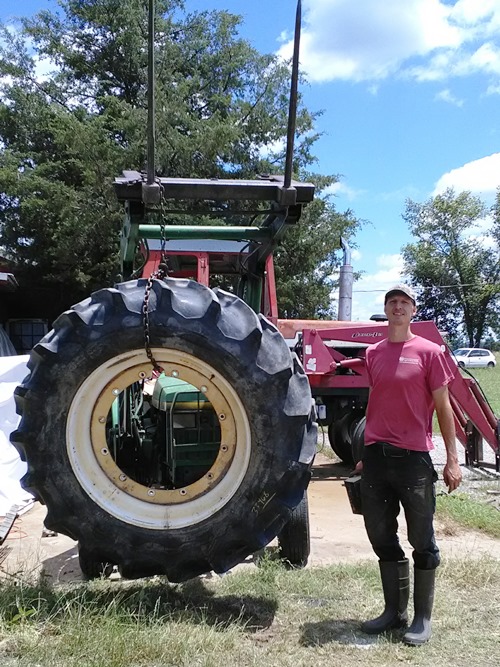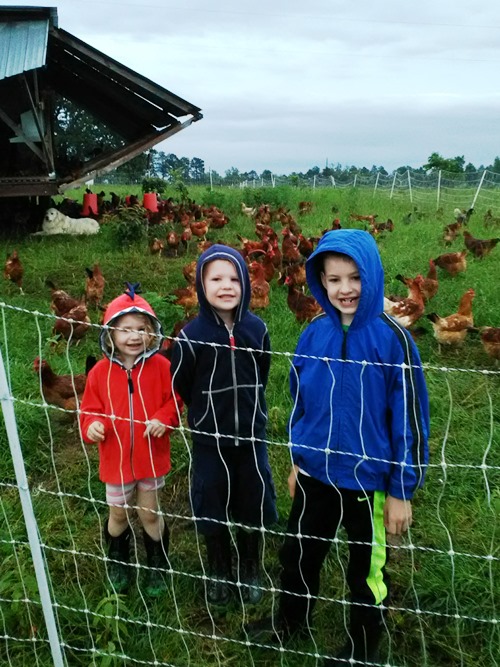Me again… I like an interesting headline, don’t you? But what I really dislike is headlines that deliberately deceive you. Thankfully for this writer-wannabe, English is ambiguous enough that reading today’s headline really doesn’t tell you exactly what I mean. So you clicked, right? I would totally click. We all know China’s scary food safety history. It’s a pretty dismal record.
So how in the world can I say their pork is better?
Well. When I was writing my last article pertaining to some undisclosed amount of American chicken being transported to China for cooking and processing, and then being shipped back and funneled into the general market, WITH NO SPECIAL LABELING WHATSOEVER, I stumbled upon a new bit of info that even I didn’t know.
Chinese pork is better than ours.
Not “ours” as in Shady Grove Ranch’s, thankfully. “Ours” as in American pork in general. The general “we.”
As you know, China has TONS of people. And they love pork. Thus they import TONS of pork to feed those people. Interestingly, though, they are pickier than most Americans about what the pork is fed.
Commercially-raised pork from the USA is routinely fed a drug called ractopamine, which helps pigs burn fat and build muscle. I’m not a doctor/veterinarian, so I can’t explain the mechanism to you, but basically it messes with their endocrine systems and tricks their bodies into bulking up. Think The Hulk, only with a curly tail. Oh, wait, commercial piggeries cut off their tails. I digress…
If the fact that they’re feeding drugs to pigs doesn’t surprise you, maybe this will: There is no withdrawal period. Pigs (and cows and turkeys, by the way) can be fed this drug right up to the day they are slaughtered.
Why do they do it? Because muscle meat makes more money than fat. Plain and simple. You could have guessed that. We’ve all done it—when you’re shopping for bacon, what do you do? You look through the little window on the back of the package, and pick out the one with the least fat!
Well, I have a secret for you… pigs are fat factories. And that’s a good thing. Rightly-raised animal fat is full of wonderful nutrients, with pasture-raised pork fat being especially high in Vitamin D. Here’s another secret—bacon isn’t always just neat little rows of fat/lean/fat/lean. Sometimes it looks like this:

Don’t worry—we farmers aren’t afraid of a little (or a lot of) fat, so we usually eat the stuff that turns out like this and you never even see it. But occasionally we’ll accumulate more than we can eat, so we run special discounts on “fat” meat, like our recent batches of “Chubby Breakfast Sausage,” or our “Fat Sirloin Chops.” (Sorry, they’re all sold out now, but I’m sure we’ll have more in the future! Our newsletter is a great way to stay informed of specials!)

How does it happen? Well, bigger pigs tend to slow down on muscle growth and speed up on fat production. But of course there’s an inherent “cost per head” associated with raising livestock for food. So it’s more advantageous from a cost-per-animal perspective to let pigs grow big before slaughter. But bigger pigs have fatter meat, so it’s a catch-22. Industry’s solution is to use drugs to manipulate the way a pig’s metabolism behaves. They can grow bigger pigs but force their bodies to do away with the excess fat. Call me old-fashioned, but the last thing you want to be messing with is your natural metabolic processes. Sounds pretty scary to me…
When did cheapness of food trump all other qualities? Just because science *can* do something (e.g. raise pigs bigger and leaner using drugs) doesn’t mean we *should.* We feel the benefits of drug-free pork are worth some extra cost.
Apparently China does, too.
Get this: The Chinese import authority does not allow their pigs to be fed any ractopamine ever. So it’s not even good enough for them if a drug withdrawal protocol is observed and the meat tests clean of ractopamine. Producers have to PROVE that the pigs were never even accidentally fed ractopamine. In that sense, Chinese families eat better pork than most Americans!
Maybe ractopamine use is a rare practice? It seems doubtful. If you head down to the local feed store, you can find in the Show Pig Feed section a feed additive called Paylean which contains this drug. Any 4-H or FFA kid can use it to make their piggy extra pretty at showtime. So if you though by buying “local” you’d be safe, guess again. I’m not criticizing them for wanting to do well at show. I’m criticizing the American thinking that has concluded that fat is bad, and pigs shouldn’t make fat and therefore need to be “fixed.” It’s like begrudging an ear of corn for having a cob!
Pigs make fat. It’s what they do best. The meat is really a bonus! Back when our society relied on animal fats for essentials like candles and soap, we were delighted that pigs were so efficient at producing fat! Momma rendered it and used every last bit for preserving food, greasing axles, and oiling leather, in addition to the more obvious uses like cooking oil, candles, and soap.
So how do we deal with the fat problem? Well, we certainly don’t give our pigs drugs! Our solution here at SGR, is to take pigs “to market” aka “freezer camp” before they get too big and fat. It’s part of the reason our pork is generally more expensive. It simply takes more pigs to make a given amount of pork. But once in a while, we have to “retire” one of our older, larger, breeder pigs, and more often than not, their meat is just plain fatter, and the fat can’t always just be trimmed away because it’s “built in.” That’s the case with all three of the above photos. It doesn’t cost any less to raise the extra-chubby ones. But people don’t place value on fat like they do on protein. So that’s just factored in to our natural farm management plan. That’s why you’ll occasionally see sales of fatter cuts. Once we’ve eaten our fill first, of course! 😉
And of course I’ve got my little soap factory going. If you haven’t tried our soap yet, we get great feedback on it (and love using it ourselves!!). And we use lard in place of all vegetable oil in cooking. It makes killer pastry! Toss the Crisco and switch to real lard!
I find it ironic that many Americans seem to be ok with these unnatural practices which China eschews, but are appalled when they find out that Chinese chicken factories are producing their chicken nuggets and popcorn chicken. The Chinese recognize the inferiority, and maybe even the danger, of pork fed drugs to keep it lean. Now you do, too, and you’ve got the advantage of knowing a farm that not only doesn’t feed ractopamine, but also really pasture-raises those piggies without any OTHER drugs (yes, there are others), or GMOs or other garbage (literally).
Chinese pork isn’t better than our pork. That’s SGR’s “our.”





